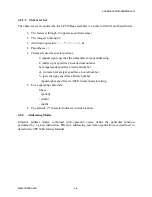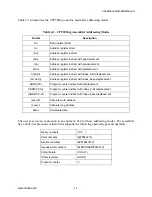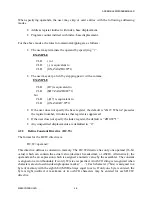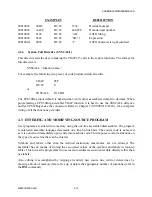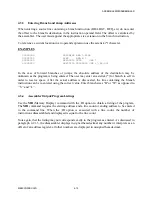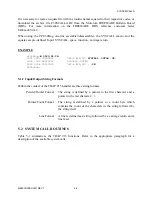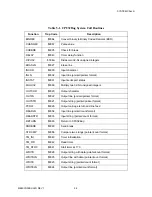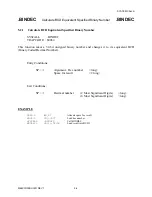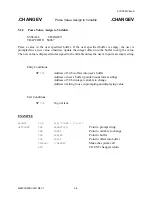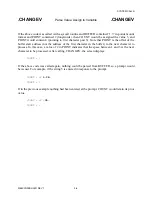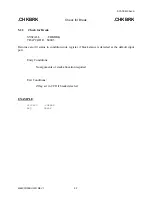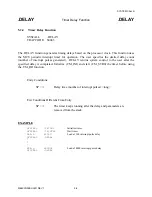
ASSEMBLER/DISASSEMBLER
M68CPU32BUG/D
4-5
4.2.1.4
Mnemonics and Delimiters
The assembler recognizes all M68300 Family instruction mnemonics. Numbers are recognized as
binary, octal, decimal, and hexadecimal, with hexadecimal as the default case.
•
Decimal values are preceded by an ampersand (&). Examples are:
&12334
-&987654321
•
Hexadecimal values are preceded by a dollar sign ($). An example is:
$AFE5
One or more ASCII characters enclosed by single quote marks ( ’ ) constitute an ASCII string.
ASCII strings are right-justified and zero filled (if necessary), whether stored or used as
immediate operands.
00003000
21FC0000 12345678
MOVE.L
#$1234,($5678).W
005000
0053
DC.W
’S’
005002
223C41424344
MOVE.L
#’ABCD’,D1
005008
3536
DC.W
’56’
The following register mnemonics are recognized/referenced by the assembler/disassembler:
Pseudo Registers
R0-R7
User Offset Registers.
Main Processor Registers
PC
Program Counter - Used only in forcing program counter-relative addressing.
SR
Status Register
CCR
Condition Codes Register (Lower eight bits of SR)
USP
User Stack Pointer
SSP
System Stack Pointer
VBR
Vector Base Register
SFC
Source Function Code Register
DFC
Destination Function Code Register
D0-D7
Data Registers
A0-A7
Address Registers - Address register A7 represents the active system stack
pointer, that is, either USP or SSP, as specified by the S bit of the status
register
Содержание M68CPU32BUG
Страница 16: ...GENERAL INFORMATION M68CPU32BUG D REV 1 1 8 ...
Страница 30: ...DEBUG MONITOR DESCRIPTION M68CPU32BUG D REV 1 2 14 ...
Страница 102: ...DEBUG MONITOR COMMANDS M68CPU32BUG D REV 1 3 72 ...
Страница 168: ...DIAGNOSTIC FIRMWARE GUIDE M68CPU32BUG D REV 1 6 24 ...
















